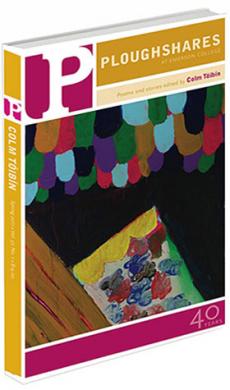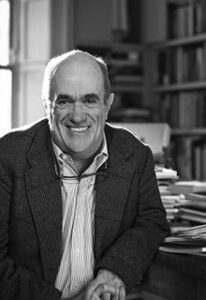Review: Close Calls with Nonsense: Reading New Poetry
It is not true, although it is sometimes ungenerously suggested, that the practitioners of contemporary poetry and its readership are one and the same set of people, but it does seem to be true that poetry reviewing is at present done mainly by poets. Since poets read more poetry and have thought harder about it than most other people, they certainly possess the basic qualifications reviewers ought to have, but too often collegiality prevails and the resulting review conveys little beyond the sparkling nothingness of a blurb. Someone’s “third and most recent collection,” we read, “is a complexly woven meditation— and performance—reflecting the self, its audience, and the poetic enactment of language.” Yes, no doubt it is, but since so large a description might as easily fit any other poet’s third, or first, or ninth collection, the would-be reader has little to go on in deciding whether to pick up this poetic enactment of language or look for another.
A rival school of collegiality-be-damned reviewing exists—e.g., the famously acerbic poet and critic William Logan—but a reflexively dismissive reviewer, while more entertaining than a reflexively flattering one, is by no means more helpful.
All the more reason, then, to be grateful for Stephen Burt. Burt is a poet, a scholar of American poetry since World War ii, and arguably our most consistently readable and interesting commentator on contemporary poetry. Close Calls with Nonsense collects twenty-some of Burt’s reviews and a few articles of more general scope into a volume that is worth reading even if one has (as I had) read several of the pieces already. Collections of a writer’s previously published work have a largely deserved reputation for being diffuse and dispensable, but some such books become landmarks: Lionel Trilling’s The Liberal Imagination, for example, and Poetry and the Age by Randall Jarrell. It is too soon to say whether Close Calls with Nonsense will have that kind of claim to posterity’s attention, but there is nothing slapdash or merely opportunistic in the way it collects and organizes its diverse contents. It coheres, and an argument emerges.
Longer pieces at the beginning, middle, and end of the volume— “Close Calls with Nonsense: How to Read, and Perhaps Enjoy, Very New Poetry,”“My Name is Henri: Contemporary Poets Discover John Berry-man,” and “The Elliptical Poets”—set out the main points of that argument. Burt usefully redescribes the familiar tradition-vs.-experimentation divide as the difference between a lyric poetry that presents itself as the voice of a relatively stable, relatively constant self with unique memories and experiences and a post-lyric poetry, influenced by continental theory’s critique of the subject, which conceives of the self as a linguistic and ideological construction. Burt sees Jorie Graham’s 1987 volume The End of Beauty as a watershed, marrying the emotional power of a distinctive personal voice to an intellectual rigor strong enough to acknowledge the fissures in selfhood and the factitiousness of language. A shoal of younger poets, Burt thinks, followed Graham’s lead, some of them additionally discovering a serviceable precursor in the always fracturing, always reassembling lyric self of John Berryman’s 77 Dream Songs. These are the writers Burt dubbed the “elliptical poets” in his best-known and most-discussed piece, first published in 1998.
Is ours the Age of the Ellipticals? Well…we’ll see. The present reviewer found and finds “The Elliptical Poets” modestly persuasive, but most of the many who wrote in response took issue with the essay, sometimes in stern terms. Even so, the essay’s success lies less in its persuasiveness than its having gotten a broad range of readers of poetry to engage its arguments. That an essay could, at so late a date, become a common focal point in an American poetry landscape of innumerable tribes, many of them indifferent or hostile to each other, is itself an accomplishment.
That even the “Ellipticals” themselves did not much cotton to being so known may be beside the point. After all, were the 1950s really, as Jarrell argued in a famous essay, an “Age of Criticism”? Perhaps not, but the discussion that essay inaugurated is part of the intellectual history of the United States in the 1950s.
Burt’s never less than intriguing generalizations about contemporary poetry are backed up by his never less than insightful readings of individual poets. Culled from the about 150 reviews Burt has published since 1994, the pieces on individual poets are organized into three sections, one devoted to twelve mid-career contemporary U.S. poets, one to six non-U.S. Anglophone poets, and one to a kind of pantheon (Ashbery, O’Hara, Merrill, Niedecker, and five others). These reviews display again and again Burt’s characteristic strengths as a critic: scholarly depth without pedantry, sophistication without recourse to jargon, intimate familiarity with the corpus and career of the poet about whom he is writing. He has an affinity for the kind of poetry he describes in “The Elliptical Poets,” in which the tactics of estrangement have nonetheless an allure that draws one in, and the disintegration of the self precipitates an aufhebung in which we find ourselves “more truly and more strange,” as Stevens put it, but he also has a gift for responding intelligently to markedly different kinds of work. The image on the book’s cover, of a boy leaning back off the edge of a chair to read a book propped open upside-down on the floor, is a perfect choice, as Burt is always leaning over backward to meet a poem on its own terms. That he can write as perceptively on Richard Wilbur and Les Murray as he does on Ashbery and Denise Riley makes him the peculiarly reliable critic that he is.
One obviously does not go to a critic with sympathies as wide as Burt’s for manifestos. Fittingly, the book’s last piece, “Without Evidence,” is not a call to arms but a hovering cloud of aperçus, questions, and fragments. There are writers on contemporary poetry with more polemical muscle than Burt (Steve Evans, say) and those who are more explosively provocative (Kent Johnson, say), but if any place of honor remains for criticism that is undogmatic, exploratory, and written with grace and verve, Stephen Burt has first dibs on it.

